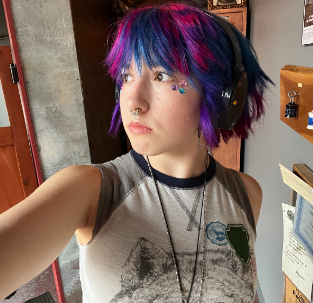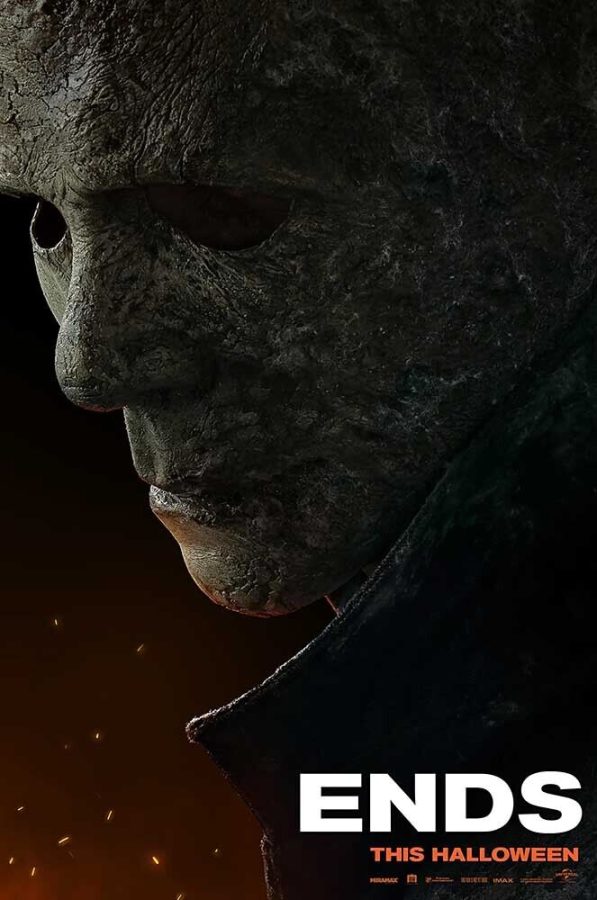“Halloween Ends”… In Ways it Shouldn’t?
For over four decades, Michael Myers has terrorized the theatres. Three generations have watched as he hunted and haunted the people of Haddonfield. In the Halloween series’ fourth and final installment, how will the town’s forty years of fear come to an end?
“Halloween Ends”, released Oct. 14, takes place four years after the events of “Halloween” (2018) and “Halloween Kills”. The film begins with Corey Cunningham (Rohan Campbell) as he takes an impromptu babysitting job that ends in tragedy on Halloween, 2019. It then cuts to Laurie Strode (Jamie Lee Curtis) and her granddaughter, Allyson (Andi Matichak), who have settled into a new home in Haddonfield years later.
Compared to last year’s “Halloween Kills”, “Halloween Ends” was a return to frightening form and a better fit for the saga. Though it had a more cohesive storyline than the previous release and continued the theme of “pure evil”, there were still sections and concepts of this installment that felt disjointed and out of place with the rest.
The film incorporates a dynamic similar to the “Scream” franchise: the “two killer” construct. The concept is well fleshed-out in the horror industry, but the abrupt entrance and end it made in this movie felt unnecessary and overall convoluted. The movie introduces Corey as a pitiable victim of Haddonfield’s hatred before it shows his transition to “evil” after his first encounter with Michael.
Although Corey’s storyline is set up as a continuation of the Myers reign, his death comes just as quickly as his entrance to the killing “game”. Corey as a second “Michael Myers” could’ve been an interesting addition if he was added earlier in the timeline but appearing just for shock value ultimately causes his arc to fall flat.
Additionally, throughout Michael Myers’s reign of terror, the mask has held such an importance to his character that the slightest removal of it always stops him in his tracks. Each and every movie emphasized this point, whether it was little jabs scattered about or a whole portion dedicated to it; yet, “Halloween Ends” irreverently muddles its significance.
Corey’s ability to take and wear Michael’s mask without trouble isn’t necessarily unheard of: the issue lies in his ease of removing it. When Michael puts on the mask, it’s as if he is completed.
So, is the mask itself a completing factor or is it Michael’s connection to the mask that is significant? If it only holds importance to Michael what would be the benefit of Corey snatching it?
The kicker, nevertheless, was the movie’s ending. In the official trailer, Laurie wonders if Michael’s death is directly linked to hers which implies a “double death” plan of action. However, his death in the movie contradicts that idea completely. After his corpse is paraded throughout the town–a form of closure for Haddonfield–his death is finalized using a car compactor in the junkyard; Laurie remains unscathed. What was mentioned in the trailer is disregarded almost completely, leaving the ending unsatisfactory and seemingly inconclusive.
Despite a few positives, the overall film is heavily disappointing. Forty years of film have led to this finale and the loose ends created by the various iterations still remain untied. Hopefully, the overwhelming amount of fan demands for the remaking of the film will cause enough ruckus for the creators to reflect upon its release.

Lex Chapman is currently a senior at SBHS and is a returning section editor for the "Bulldog Tribune". Lex also plays an active leadership role in the...


